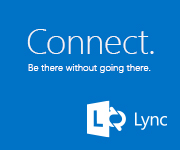Update Rollup 1 (UR1) for Exchange Server 2010 SP2 Released
Microsoft has released the following update rollup for Exchange Server 2010:
- Update Rollup 1 for Exchange Server 2010 SP2 (2645995)
If you’re running Exchange Server 2010 SP2, you need to apply Update Rollup 1 for Exchange 2010 to address the issues listed below.
Remember, you only need to download the latest update for the version of Exchange that you’re running.
Here is a list of the fixes included in update rollup 1:
- 2465015 You cannot view or download an image on a Windows Mobile-based device that is synchronized with an Exchange Server 2010 mailbox
- 2492066 An automatic reply message is still sent after you clear the “Allow automatic replies” check box for a remote domain on an Exchange Server 2010 server
- 2492082 An Outlook 2003 user cannot view the free/busy information of a resource mailbox in a mixed Exchange Server 2010 and Exchange Server 2007 environment
- 2543850 A GAL related client-only message rule does not take effect in Outlook in an Exchange Server 2010 environment
- 2545231 Users in a source forest cannot view the free/busy information of mailboxes in a target forest in an Exchange Server 2010 environment
- 2549255 A meeting item displays incorrectly as multiple all-day events when you synchronize a mobile device on an Exchange Server 2010 mailbox
- 2549286 Inline contents disposition is removed when you send a “Content-Disposition: inline” email message in an Exchange Server 2010 environment
- 2556113 It takes a long time for a user to download an OAB in an Exchange Server 2010 organization
- 2557323 Problems when viewing an Exchange Server 2003 user’s free/busy information in a mixed Exchange Server 2003 and Exchange Server 2010 environment
- 2563245 A user who has a linked mailbox cannot use a new profile to access another linked mailbox in an Exchange Server 2010 environment
- 2579051 You cannot move certain mailboxes from an Exchange Server 2003 server to an Exchange Server 2010 server
- 2579982 You cannot view the message delivery report of a signed email message by using Outlook or OWA in an Exchange Server 2010 environment
- 2585649 The StartDagServerMaintenance.ps1 script fails in an Exchange Server 2010 environment
- 2588121 You cannot manage a mail-enabled public folder in a mixed Exchange Server 2003 and Exchange Server 2010 environment
- 2589982 The cmdlet extension agent cannot process multiple objects in a pipeline in an Exchange Server 2010 environment
- 2591572 “Junk e-mail validation error” error message when you manage the junk email rule for a user’s mailbox in an Exchange Server 2010 environment
- 2593011 Warning 2074 and Error 2153 are logged on DAG member servers in an Exchange Server 2010 environment
- 2598985 You cannot move a mailbox from a remote legacy Exchange forest to an Exchange Server 2010 forest
- 2599434 A Public Folder Calendar folder is missing in the Public Folder Favorites list of an Exchange Server 2010 mailbox
- 2599663 The Exchange RPC Client Access service crashes when you send an email message in an Exchange Server 2010 environment
- 2600034 A user can still open an IRM-protected email message after you remove the user from the associated AD RMS rights policy template in an Exchange Server 2010 environment
- 2600289 A user in an exclusive scope cannot manage his mailbox in an Exchange Server 2010 environment
- 2600943 EMC takes a long time to return results when you manage full access permissions in an Exchange Server 2010 organization that has many users
- 2601483 “Can’t open this item” error message when you use Outlook 2003 in online mode in an Exchange Server 2010 environment
- 2604039 The MSExchangeMailboxAssistants.exe process crashes frequently after you move mailboxes that contain IRM-protected email messages to an Exchange Server 2010 SP1 mailbox server
- 2604713 ECP crashes when a RBAC role assignee tries to manage another user’s mailbox by using ECP in an Exchange Server 2010 environment
- 2614698 A display name that contains DBCS characters is corrupted in the “Sent Items” folder in an Exchange Server 2010 environment
- 2616124 Empty message body when replying to a saved message file in an Exchange Server 2010 SP1 environment
- 2616230 IMAP4 clients cannot log on to Exchange Server 2003 servers when the Exchange Server 2010 Client Access server is used to handle proxy requests
- 2616361 Multi-Mailbox Search fails if the MemberOfGroup property is used for the management scope in an Exchange Server 2010 environment
- 2616365 Event ID 4999 when the Store.exe process crashes on an Exchange Server 2010 mailbox server
- 2619237 Event ID 4999 when the Exchange Mailbox Assistants service crashes in Exchange 2010
- 2620361 An encrypted or digitally-signed message cannot be printed when S/MIME control is installed in OWA in an Exchange Server 2010 SP1 environment
- 2620441 Stop-DatabaseAvailabilityGroup or Start-DatabaseAvailabilityGroup cmdlet fails when run together with the DomainController parameter in an Exchange Server 2010 environment
- 2621266 An Exchange Server 2010 database store grows unexpectedly large
- 2621403 “None” recipient status in Outlook when a recipient responds to a meeting request in a short period of time in an Exchange Server 2010 environment
- 2628154 “The action couldn’t be completed. Please try again.” error message when you use OWA to perform an AQS search that contains “Sent” or “Received” in an Exchange Server 2010 SP1 environment
- 2628622 The Microsoft Exchange Information Store service crashes in an Exchange Server 2010 environment
- 2628693 Multi-Mailbox Search fails if you specify multiple users in the “Message To or From Specific E-Mail Addresses” option in an Exchange Server 2010 environment
- 2629713 Incorrect number of items for each keyword when you search for multiple keywords in mailboxes in an Exchange Server 2010 environment
- 2629777 The Microsoft Exchange Replication service crashes on Exchange Server 2010 DAG members
- 2630708 A UM auto attendant times out and generates an invalid extension number error message in an Exchange Server 2010 environment
- 2630967 A journal report is not sent to a journaling mailbox when you use journaling rules on distribution groups in an Exchange Server 2010 environment
- 2632206 Message items rescanned in the background in an Exchange Server 2010 environment
- 2633044 The Number of Items in Retry Table counter displays an incorrect value that causes SCOM alerts in an Exchange Server 2010 SP1 organization
- 2639150 The MSExchangeSyncAppPool application pool crashes in a mixed Exchange Server 2003 and Exchange Server 2010 environment
- 2640218 The hierarchy of a new public folder database does not replicate on an Exchange Server 2010 SP1 server
- 2641077 The hierarchy of a new public folder database does not replicate on an Exchange Server 2010 SP1 server
- 2642189 The RPC Client Access service may crash when you import a .pst file by using the New-MailboxImportRequest cmdlet in an Exchange Server 2010 environment
- 2643950 A seed operation might not succeed when the source mailbox database has many log files in a Microsoft Exchange Server 2010 DAG
- 2644047 Active Directory schema attributes are cleared after you disable a user’s mailbox in an Exchange Server 2010 environment
- 2644264 Disabling or removing a mailbox fails in an Exchange Server 2010 environment that has Office Communications Server 2007, Office Communications Server 2007 R2 or Lync Server 2010 deployed
- 2648682 An email message body is garbled when you save or send the email message in an Exchange Server 2010 environment
- 2649727 Client Access servers cannot serve other Mailbox servers when a Mailbox server encounters a problem in an Exchange Server 2010 environment
- 2649734 Mailbox replication latency may occur when users perform a Multi-Mailbox Search function against a DAG in an Exchange Server 2010 environment
- 2649735 Warning of undefined recipient type of a user after the linked mailbox is moved from an Exchange Server 2007 forest to an Exchange Server 2010 forest
- 2652849 The MailboxCountQuota policy is not enforced correctly in an Exchange Server 2010 hosting mode
- 2665115 Event ID 4999 is logged on an Exchange Server 2010 Client Access server (CAS)
Download the rollup here.
Installation Notes:
If you haven’t installed Exchange Server yet, you can use the info at Quicker Exchange installs complete with service packs and rollups to save you some time.
Microsoft Update can’t detect rollups for Exchange 2010 servers that are members of a Database Availability Group (DAG). See the post Installing Exchange 2010 Rollups on DAG Servers for info, and a script, for installing update rollups.
Update Rollups should be applied to Internet facing Client Access Servers before being installed on non-Internet facing Client Access Servers.
If you’re installing the update rollup on Exchange servers that don’t have Internet access, see “Installing Exchange 2007 & 2010 rollups on servers that don’t have Internet access†for some additional steps.
Also, the installer and Add/Remove Programs text is only in English – even when being installed on non-English systems.
Note to Forefront users:
If you don’t disable Forefront before installing a rollup or service pack, and enable afterwards, you run the risk of Exchange related services not starting. You can disable Forefront by going to a command prompt and navigating to the Forefront directory and running FSCUtility /disable. To enable Forefront after installation of a UR or SP, run FSCUtility /enable.





Follow Me